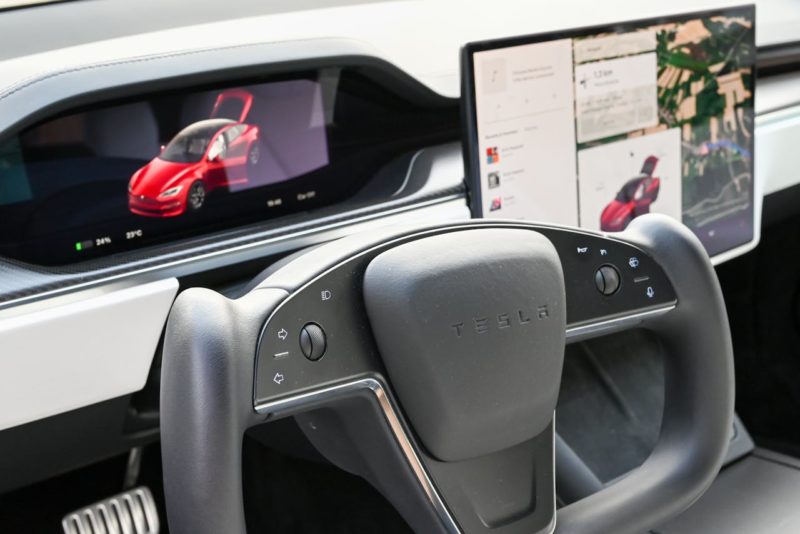The Role of EV Software Development in Sustainable Mobility

The use of motorcycles, cars, and other vehicles has simplified mobility for all. But with such, sustainability has become a key concern that every individual needs to worry about.
Following such, the concept of sustainable mobility is on the rise, and individuals are supporting it. More people are looking for cleaner transport choices that cut pollution without making travel difficult. As a result, electric vehicles have gained mass attention because they help reduce carbon emissions and support a greener lifestyle.
But the real value of an electric vehicle comes from something many people do not see. It’s not just the battery or the design, but it’s the software inside the vehicle and its connected systems.
In this blog, we will discuss the potential role that EV software development plays in promoting such sustainable mobility.
How EV Software Development Is Transforming the EV Sector?
Electric vehicles are powered by software for almost every task. The way the vehicle behaves depends on the software running inside it. Today’s EVs are built with sensors, control units, and cloud tools that work together to create a smooth experience.
This shift is shaping the entire industry. Hence, it can be mentioned that the EV software is the ultimate brain of any EV. This is why EV manufacturers look for an experienced EV software development company to build strong and scalable systems.
Here are some key ways in which EV software is transforming the EV sector.
More Control Over Performance
EV software tracks every associated factor, from battery health and temperature levels to motor activity. With this data, the vehicle can adjust how much power it uses and when it needs to cool down. This keeps the EV safe and stable during long drives.
Better Range Accuracy
Earlier, the driving range was based on simple calculations, which were just the available charge and pre-feed range. But modern EV software checks many things, such as driving style, road type, and weather. This helps the vehicle show a more accurate range on the dashboard.
Improved Safety Features
Software also improves safety features like auto braking, lane support, and speed control. It evaluates the real-time citations and quickly responds to changes on the road, and helps prevent accidents.
Smart User Experience
Most EVs come with mobile apps that let users check charging levels, track energy use, and find stations. This offers more control and comfort to the user. Many people who switch to electric vehicles say the software experience is one of the main reasons they enjoy using them.
The Role of EV Software in Sustainability
For mobility to become truly sustainable, transportation systems must use energy wisely, avoid waste, and reduce harmful impact. Hence, EV software helps achieve these goals.
Here’s how EV software is contributing to the sustainable goals.
Smarter Battery Use
The battery is the most important part of an EV. Software manages how it charges, how it releases energy, and how it stays at a safe temperature. When done well, the battery lasts longer and uses less energy. This reduces both cost and emissions.
Better Charging Control
EV software helps in managing or controlling the charging sessions. Without proper control, stations can get overloaded or waste energy during peak hours.
Software makes charging networks more reliable with features like:
- Balanced load management
- Charging time scheduling
- Speed control
- Peak hour alerts
Real Time Data Management
EVs collect a significant amount of data while driving. Hence, having compatible software in such a scenario turns this into useful guidance for drivers and fleet operators.
Fleets plan routes that avoid long idle times and slow traffic. Gradually, this reduces pollution and supports cleaner cities.
Remote Checks and Early Problem Detection
Instead of waiting for a part to fail before it can be repaired, the software alerts the user early. This reduces sudden breakdowns and lowers repair waste. When fewer parts get damaged, less material is used for replacements. This supports long-term sustainability.
Support For Renewable Energy
The EV charging stations are now shifting to solar or wind power. Hence, implementing EV software helps manage when to use stored renewable energy and when to switch to grid power. This maximizes clean energy use and reduces stress on electricity networks.
Through these features, EV software makes electric mobility cleaner, more stable, and more accessible for everyone. You can further plan to hire software developers who can help with such EV software development and integration with your EV.
Future Trends in EV Software and Sustainability
The future of mobility is closely tied to digital innovation. As technology grows, new software trends will continue to support cleaner and smarter transport systems.
More use of predictive intelligence
Advanced systems will study driving habits, battery behavior, and road conditions to make better decisions. This can help the vehicle save more energy during each trip.
Vehicle-to-Grid Features
Soon, EVs will not only take power but also share unused energy back with the grid. This helps control power shortages during busy hours. Software will manage when the vehicle needs power and when it can send power out.
Better Cybersecurity
As EVs become more connected, protecting the system from digital threats becomes important. Future software will have stronger tools to keep data safe and prevent unauthorized access.
Over The Air Updates
EVs will receive regular updates that improve their performance, safety, and energy use. Users will not need to visit service stations for most upgrades. This saves time, money, and travel, which adds to sustainability.
Integration with Smart City Systems
Cities around the world are building digital traffic systems and clean energy networks. EV software will connect with these city systems to plan the best routes, reduce waiting time, and charge during off-peak hours.
These trends show how software will continue to support the long-term goal of clean and stable mobility.
Conclusion
It can be concluded that EV software is not just making EVs smart, but is also the main reason behind sustainable mobility. Their ability to evaluate and monitor data, battery health, charging parameters, and more is making EVs much advanced and ready for today’s use.
These data provide the drivers with useful insights on how to optimize their driving and charging habits so that they can adopt a sustainable driving habit. Also, in the backend, it automates some processes, including energy management and safe charging. With the right software, the future of mobility will be cleaner, smoother, and ready for the needs of the next generation.
Would you like to receive similar articles by email?




